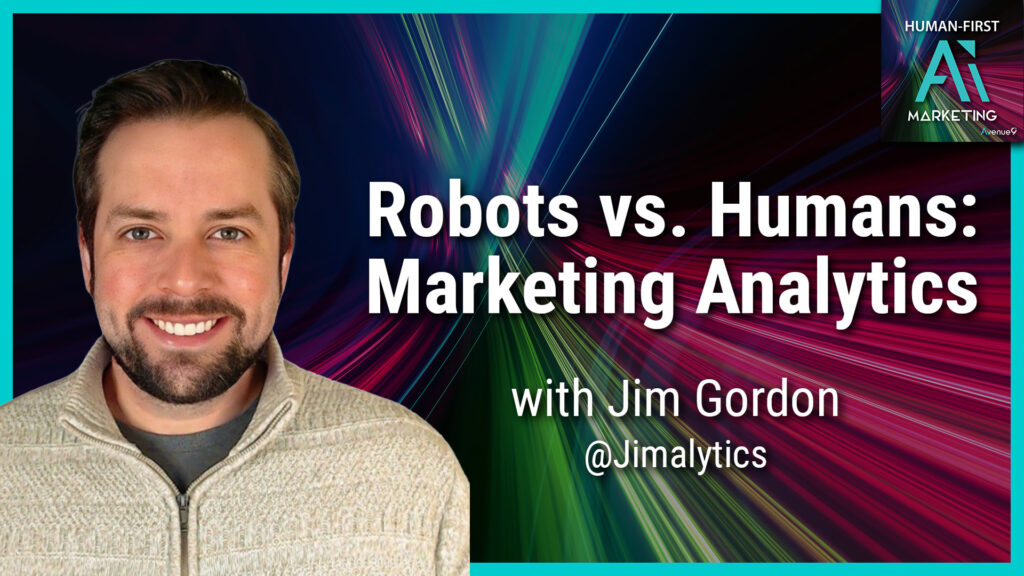The rise of AI has transformed marketing, making it easier to automate tasks, personalize experiences, and analyze data at scale. But there’s a hidden downside that many businesses don’t realize: not all traffic is human. In fact, according to industry estimates, more than 50% of internet traffic is bots, and that number may be even higher in some cases.
In a recent episode of the Human-First AI Marketing Podcast, Jim Gordon, an expert in AI analytics, shared some shocking insights about how AI agents and bots impact digital marketing—and why you should care.
Why Bot Traffic is a Big Problem for Marketers
Imagine you’ve just run a campaign, and your marketing dashboard shows a spike in website traffic. Your team celebrates—more visitors mean more potential leads, right? Not so fast.
Jim Gordon reveals that in some cases, 95% of display ad traffic can be fraudulent, and even paid search can have 15-20% bot traffic. This means that many businesses are basing critical marketing decisions on inflated and misleading numbers.
Some key ways bots distort marketing data include:
- Fake Clicks on Ads: Bots can click on your PPC ads, driving up costs without generating real leads.
- Skewed A/B Testing Results: If bots make up a significant portion of your audience, they can manipulate test results, making it hard to determine what actually works.
- Fraudulent Form Fills: Sales teams waste time chasing non-existent leads because bots fill out forms.
- Misleading Conversion Rates: If bots account for much of your site traffic, your conversion rate calculations may be way off.
Not All Bots Are Bad
While fraudulent bots can wreak havoc on marketing analytics, not all AI-driven traffic is harmful. Some AI agents are actually beneficial, such as search engine crawlers that help with SEO or AI-powered assistants that make purchases on behalf of consumers. The challenge is identifying and managing the good bots while blocking the bad ones.
How to Protect Your Marketing from AI Distortions
If bot traffic is such a big issue, what can you do about it? Jim Gordon offers several strategies:
- Use Advanced Bot Detection Tools – Platforms like CheckAI and bot-detection algorithms can help filter out suspicious activity.
- Monitor Behavioral Signals – Look for unusual patterns like extremely fast page loads, repetitive clicks, or interactions that don’t align with normal user behavior.
- Authenticate Your Audience – Long-term, we may move toward an “Authenticated Internet,” where users verify their identity before accessing certain content.
- Rethink Your KPIs – Instead of relying solely on traffic numbers, focus on engagement metrics like time on page, bounce rate, and verified conversions.
Human-First Takeaway: Design for Real People, Not Just the Algorithm
Jim and host Mike Montague emphasize that, at the end of the day, businesses should prioritize human engagement over vanity metrics. Instead of chasing high click-through rates or impression numbers, focus on real relationships with real customers.
AI and automation can amplify your marketing efforts, but they should never replace authentic human connections. When you optimize for people instead of just data points, you get better marketing results, stronger trust, and higher ROI.
Want to hear more expert insights on how AI is reshaping digital marketing? Listen to the full episode of the Human-First AI Marketing Podcast featuring Jim Gordon.
Don’t let bots dictate your marketing strategy—learn how to spot the fakes, focus on the real, and use AI the human-first way. And, if you’re ready to scale your marketing efforts with AI-driven content, Avenue9 is here to help.


